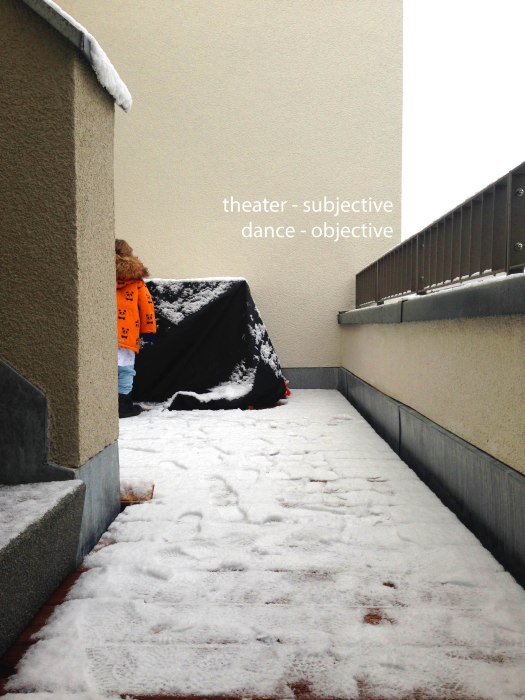To try to repeat an experience is mechanical sadhana, not spiritual. You have to keep the experience in your pocket, as it were, and then see what is coming today. You should not call back yesterday’s experience. That experience has become finite, because it is recognized. Keeping that recognition in your pocket, see what is coming in today’s practice. If you work like that, your practice is spiritual sadhana. But if you want to repeat today the experience of what was new yesterday, it is repetition; it is not sadhana – it cannot be spiritual. – B.K.S. Iyengar
Contemporary Documentation

Mo ment

The Practice of Theory
Primacy of Mind under attack.
‘ “Intelligent practice is not a step-child of theory. On the contrary theorising is one practice amongst others and is itself intelligently or stupidly conducted.”
Ryle pg 26, The Concept of Mind, New York: Hutchinson’s University Library, 1949
“Ryle went on to argue that…thinking…is merely an adverbial-like modification of activities.” Lyon pg 189 Gilbert Ryle: An Introduction to His Philosophy, Sussex: The Harvester Press,1980
“Despite the criticism that this statement faces within philosophical discourse…” Lycouris pg 64 Destabilizing Dance 1996 ‘
Is it any wonder that the second statement faces criticism with philosophical discourse? How dare anyone challenge the primacy of mind?
What does it say about dance and philosophy that an idea from 1949 is still controversial?
The three quotes above come from Destabilizing Dance, Lycouris’ dissertation through University of Surrey.
response
“…the technique of Contact Improvisation, which prioritises the understanding of movement as response to direct physical stimuli through sharingweight with a partner(Novack 1990)”
the quote above is from Sophie Lycouris’ doctoral thesis. And I think that this notion perpetuated by Cynthia Novack’s book is what is keeping CI in the dog house of dance. This book, I believe, seems to be the academic go-to for understanding Contact Improvisation. I wish academics would use a more updated notion of CI
And I think that the above notion of what CI is, is outdated and limited. CI 26 years ago, maybe, focused on the movement in CI as a “response” to stimuli. This is only half of the coin. The focus on “movement as response” is what I think Lisa Nelson has been quoted as referring to as CI not being an art form.
There is nothing in CI that precludes the dancer from creating movement before direct stimuli. I understand why the “response” side is emphasized. Beginners all too often initiate movement without having the skills to execute their desires. End-gaining in AT™ terms. But I fear that this is where most teaching of CI stops, at the listening and responding.
But that is merely the beginning.
So back to the dog house…by limiting CI to responding, practitioners give CI that limp noodle look, the “improvised” look. (Don’t get me started about whether or not improvised has a look. Does painting have a look?). And humans, being the animals that we are, assume a whole host of values when we see an iteration of something. We, unless we know better, assume that everything of that thing we observe looks like what we have seen. Think “first impressions”. If CI is noodley in one iteration, then CI is noodley.
This noodle-heit and then the assumption of cuddly hippie everything goes lackadaisical-ness ruins CI for the rest of us who practice it differently and desire to use the tool of CI for other aesthetics and logics.
(oh, Andrew. Stop whining!)
Subjectively objective and vice versa

An Empirical Definition
The absence of an empirical definition of what is meant by improvisation has been an obstacle to conceptual clarification.
where pure noetic moments reside
On the other hand, however, noesis can be also divided into a dynamic side, where pure noetic moments reside, and the passive side of hyletic data.- Kosowski, Lukasz.
Phenomenology & Mind : Noema and Thinkability : An Essay on Husserl’s Theory of Intentionality. Munchen, DEU: Walter de Gruyter, 2013. ProQuest ebrary. Web. 21 December 2015.
Copyright © 2013. Walter de Gruyter. All rights reserved.
To paraphrase Duke paraphrasing Quantz
An increase in the number of people performing reduces the proportionately the freedom to improvise – Quantz
Quantz, Johann Joachim. On Playing the Flute. Edited with introduction and notes by Edward R. Reilly. New York: The Free Press, 1966.(First German edition by Johann Friedrich Voso, Berlin, 1752.)

